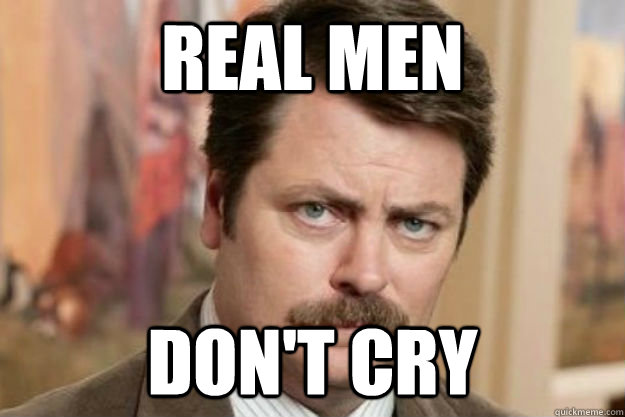Trans people have complex identities that go beyond gender, sex, and sexualities, and the “real men, real women” myth doesn’t allow for that discussion.
I recently stumbled across a few interesting pictures that illustrated the characteristics of “real men” and “real women.” Included in these characteristics was a particular “look.” Initially, I didn’t understand what troubled me about these images.
Although I recognized the “real men, real women” mantra was often used by people to discuss what they want in a partner, hearing it iterated aloud was unsettling and felt intentionally polarizing.
In these images that are making their way across the Internet, a “real man” is: paying bills, providing for his family, and spending time with his son, assuming he had one. On the other hand, the depictions of “real women” were: cooking, keeping a clean house, and personal time with her daughter.
Obviously, the problem here is that these notions are based on what men and women should do, and often force people to become pigeonholed into a gender binary—a binary that many people don’t fall so neatly into.
Not only does societal infatuation with gender binaries regarding “real men” and “real women” run the risk of isolating individuals who are the subject of deeply-rooted microaggression and marginalization, it also perpetuates transphobia, whose victims are at the top of the heap of those who face subjugation and mistreatment. This is particularly true for trans women of color.
Violence against trans people is real. The hurt? The pain? The fear? Yes, those are all real too. Referring to “real men” and “real women” as the only individuals worthy of approval, is violence against trans people.
The inherent misgendering of trans people is a form of violence. And, yes, this may be true even if the misgendering isn’t done intentionally. The sexualities, genders, and sexes of trans people always seem up for debate. This is chiefly true for trans people of color who live at the intersection of multiple identities, and are often unable to navigate in a secure, affirming, and loving space free from cissexism, misogyny, transphobia, and racism.
Remember the uncomfortable interview Piers Morgan conducted with writer and activist Janet Mock?
Seconds into the first interview, Morgan stated “This is the amazing thing about you: Had I not known anything about your story, I would have had absolutely not a clue that you had ever been a boy, a male.”
The thing is: Morgan expected this to be received as a compliment—an ode to Janet’s ability to pass through life as a “real woman.” Then, displayed on the screen throughout the interview was “Was a boy until age 18,” which, contrary to popular belief, is misgendering.
It matters not how we are born, but rather, how we identify. Even then, the more we focus on assignments-at-birth, the more the oppression and discrimination faced by trans people will continue to go uncovered. Trans people have complex and nuanced identities that go beyond gender, sex, and sexualities, and the “real men, real women” myth doesn’t allow for that discussion.
Cisgender people, those who identify with the assignments-at-birth due to the presence of particular genitalia, are in a privileged position. Surely most of us do not know the feeling of having society play a guessing game with our gender. This same “guessing game” for trans people, however, can lead to tragic consequences.
Although misgendering and transphobia are not new, the hostility has been alarming lately—in some instances even resulting in death. Last year, Islan Nettles, a black trans woman, was taunted, beaten, and murdered after identifying as transgender. This, unfortunately, is not an isolated incident.
More than one year after the killing of Nettles, many trans people say very little, if anything, has changed to make them feel more secure—even in metropolitan areas, which allegedly have more diversity and a sense of protection.
The “real men, real women” myth only perpetuates this continuous violence against trans people, especially if many are attacked because they don’t have a “passing” privilege.
According to the Anti-Violence Project, eight trans women have been killed since the beginning of June, and we are lying to ourselves if we don’t believe it starts with transphobic violence, often including misgendering.
In 2013, the National Coalition of Anti-Violence Programs, NCAVP, reported that trans women comprise 67% of anti-LGBT homicides. Just last week, Aniya Parker, a 47-year-old trans woman was violently killed in East Hollywood, California.
Trans people deserve a more nuanced understanding of their experiences from society.
Now, I know some are scratching their heads thinking, “Is it really that big of a deal? Surely, I mean no harm to trans people by saying ‘real men’ and ‘real women.’”
Yes, it is a very big deal.
The intent to harm trans people isn’t the issue, but rather, the impact our language has on trans people.
Misgendering is a form of violence against the trans community, and emphasizing this “real” myth, though ironic, causes more harm. Instead of prefacing our desires from men and women with real, maybe it is possible to simply speak of our desires and expectations without being complicit in heterosexism, reinforcing gender binaries, and forcing our outdated notions of gender onto others who never fit neatly into that mold.
“Real men” don’t exist. “Real women” don’t exist. What does exist, however, is our privilege or oppression associated therewith. Whether we like to admit it or not, what we know about men and women is typically based on social construction. And it is past time for a deconstruction.
So the next time you’re considering posting “real men, real women” memes: Don’t.
Preston Mitchum is a regular contributor to Role Reboot. He is a civil rights advocate and legal writing professor in Washington, DC. Preston has written for The Atlantic, theGrio, Huffington Post, Ebony.com, and Think Progress. Follow him on Twitter here.
Related Links:

